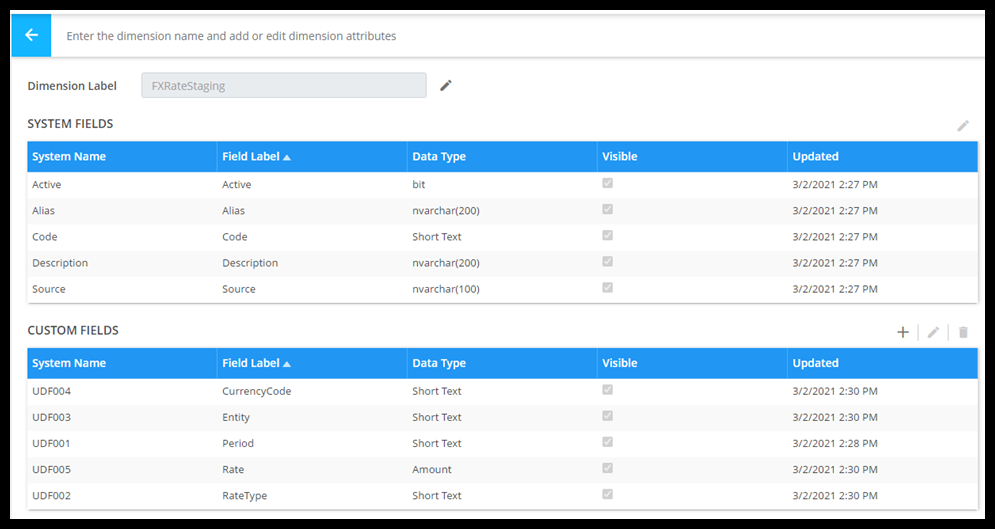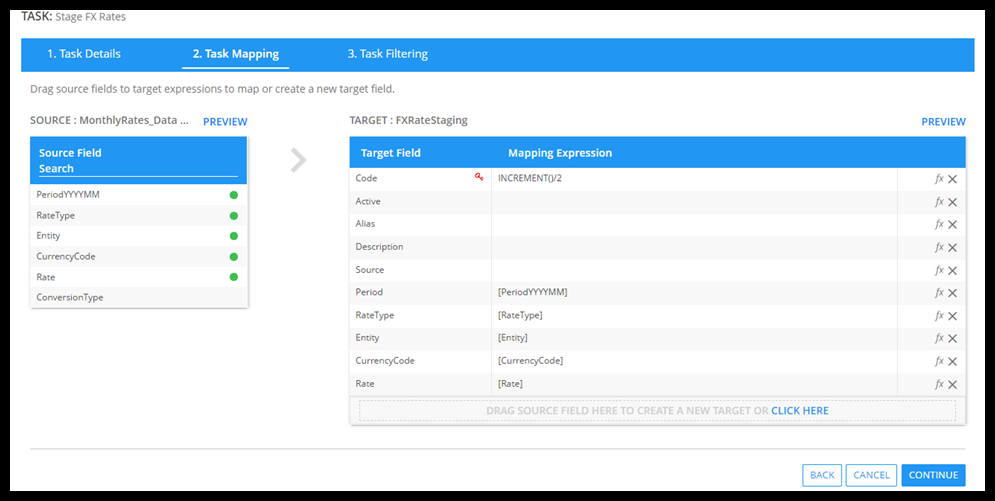Solver offers a couple way to type in monthly currency rates
- Via the Monthly Rates Menu
- Importing a file via the monthly rates menu
This article will go over how to load your rates from your ERP into a Dimension table and provide a rule you can use to load them. If you have a new tenant and are configuring your Currency for the first time, you will need to label your accounts so that our currency rules pick up the correct accounts to translate. For information on this, please refer to this link:
Some ERPs have currency rates that can be loaded into our system through an integration. This can be done from a file import too, but you can use other ERPs that have this information in their monthly rate table. The Dimension needs to be set up like this and must be named “FXRateStaging”:

The important key columns are the Currency Code, Entity, Period, Rate, and RateType. These are all components that are necessary to load your Rates into the Solver tables. Once you create the Dimension, you can then go to create the integration and will need to configure the task mapping:

Things to note is that we use the INCREMENT()/2 function in Code to make your records unique. Also, if you do not have a Period in this format, YYYYMMDD, you can use the Expression:
TEXT([Column], “YYYYMMDD”).
This Column may have a format like a posting period that has hyphens which Solver does not automatically take in.
Finally, after you have imported the information, you can then add the rule which you can find on our Solver Website. Provided is the link (Download rules_LoadRates):
https://solver-help-a8a6hpf2cnbgekbj.centralus-01.azurewebsites.net/knowledge-base/business-rules/
The dimension and the rule can then be put in a job that is run daily or monthly so that the monthly rate reflects the current state of the exchange rate. You can then run your Currency Translation rule that is provided in your tenant. If you do not have it, you can always get the rule from the previous link.